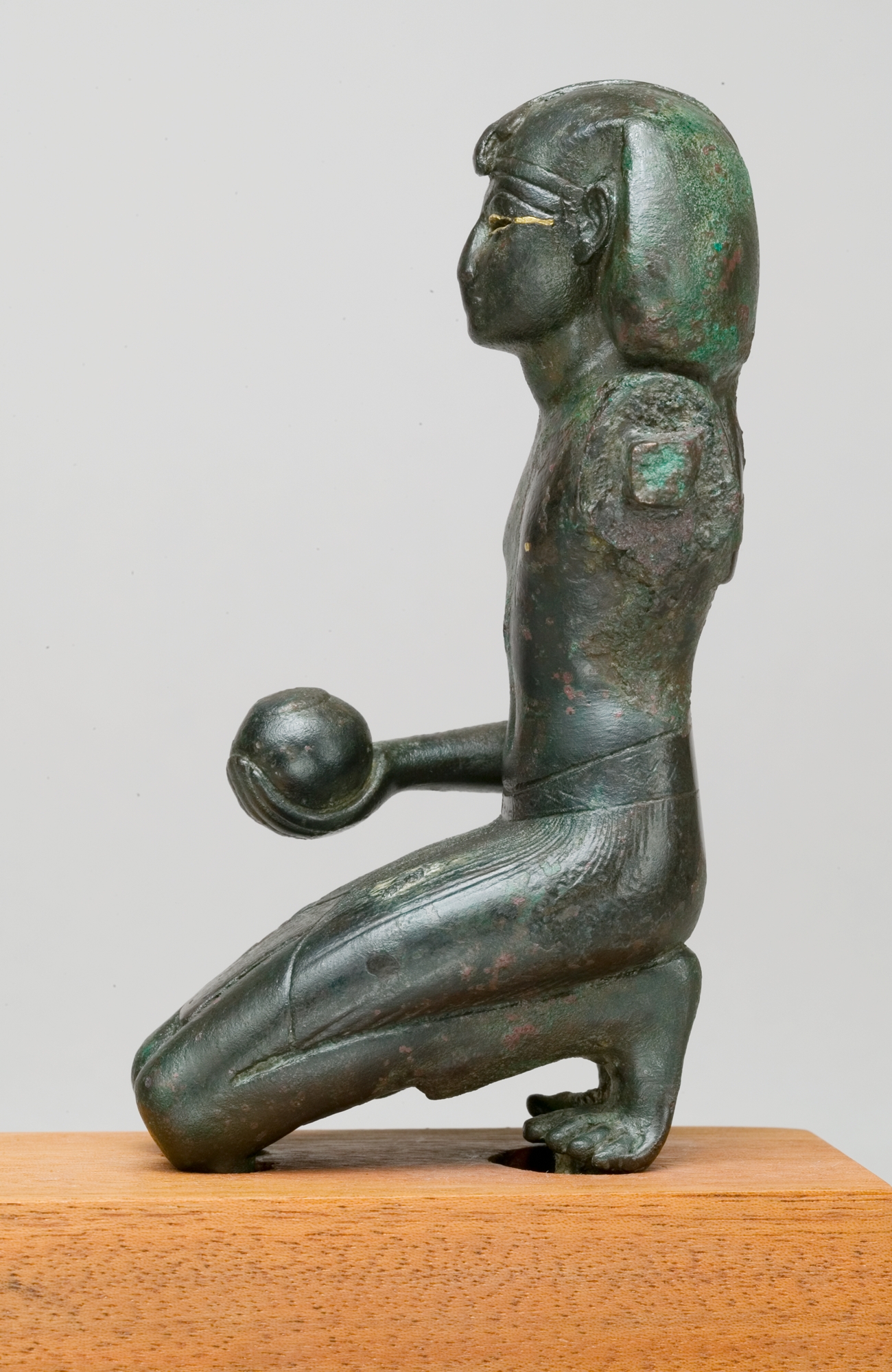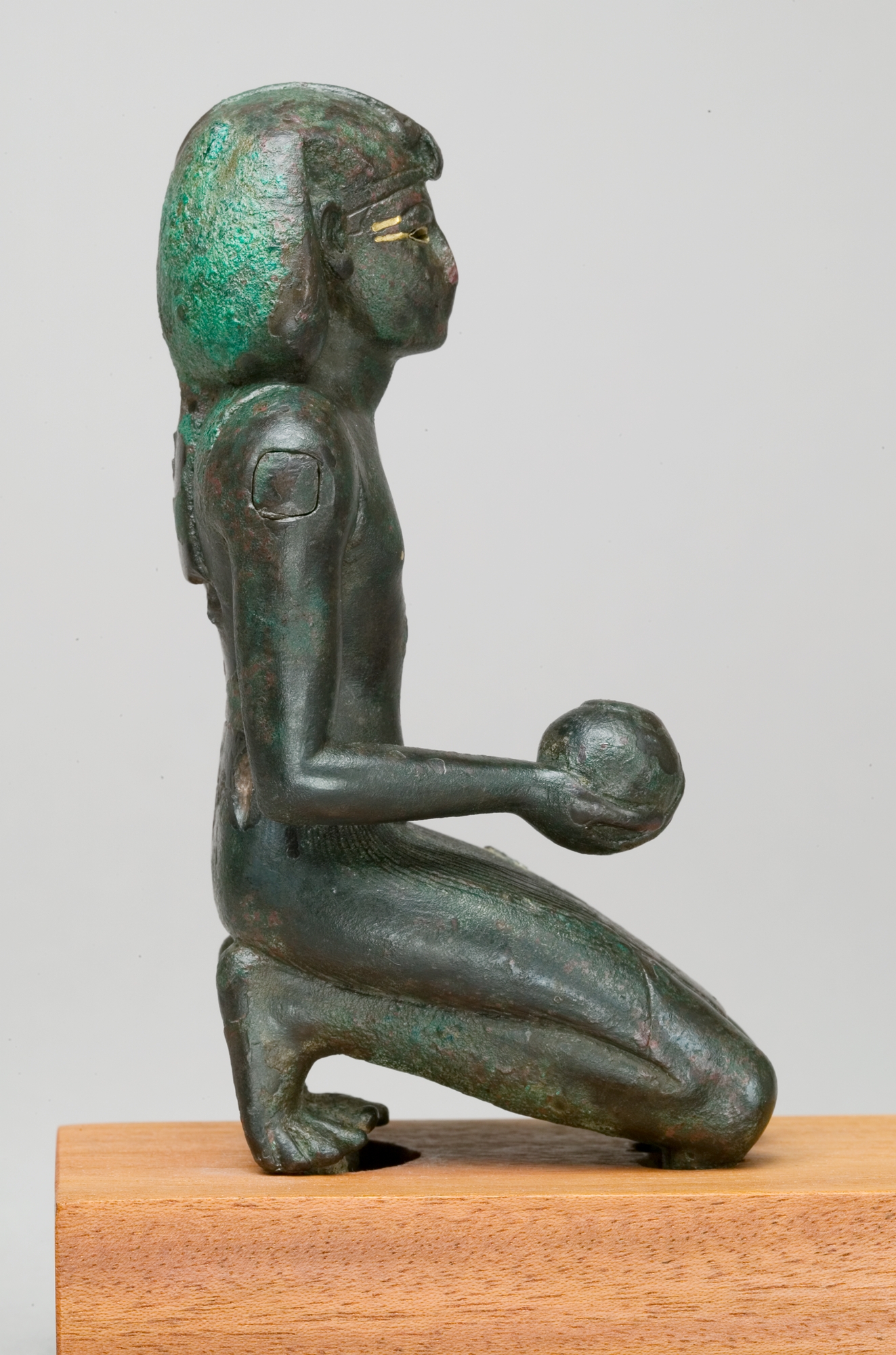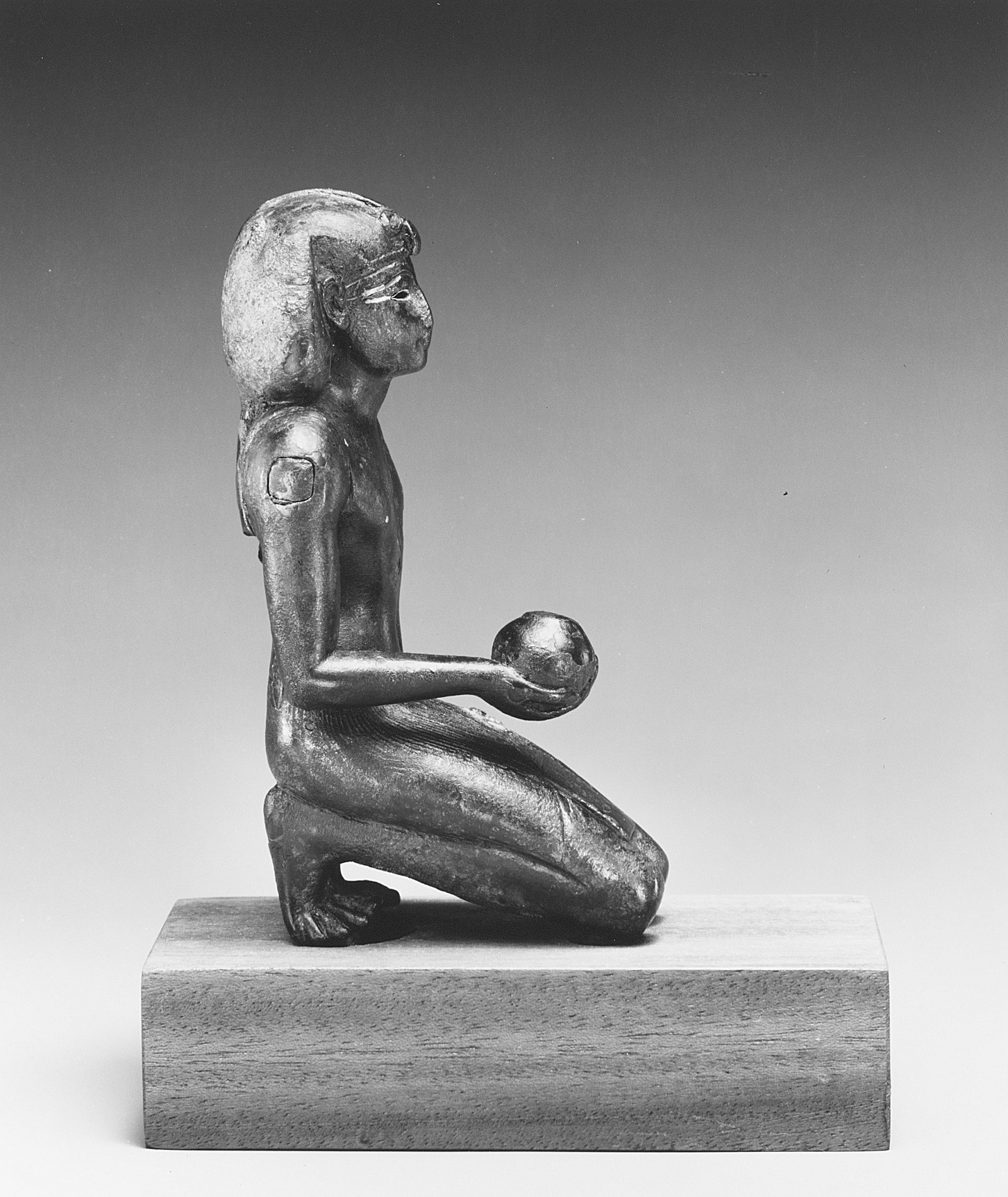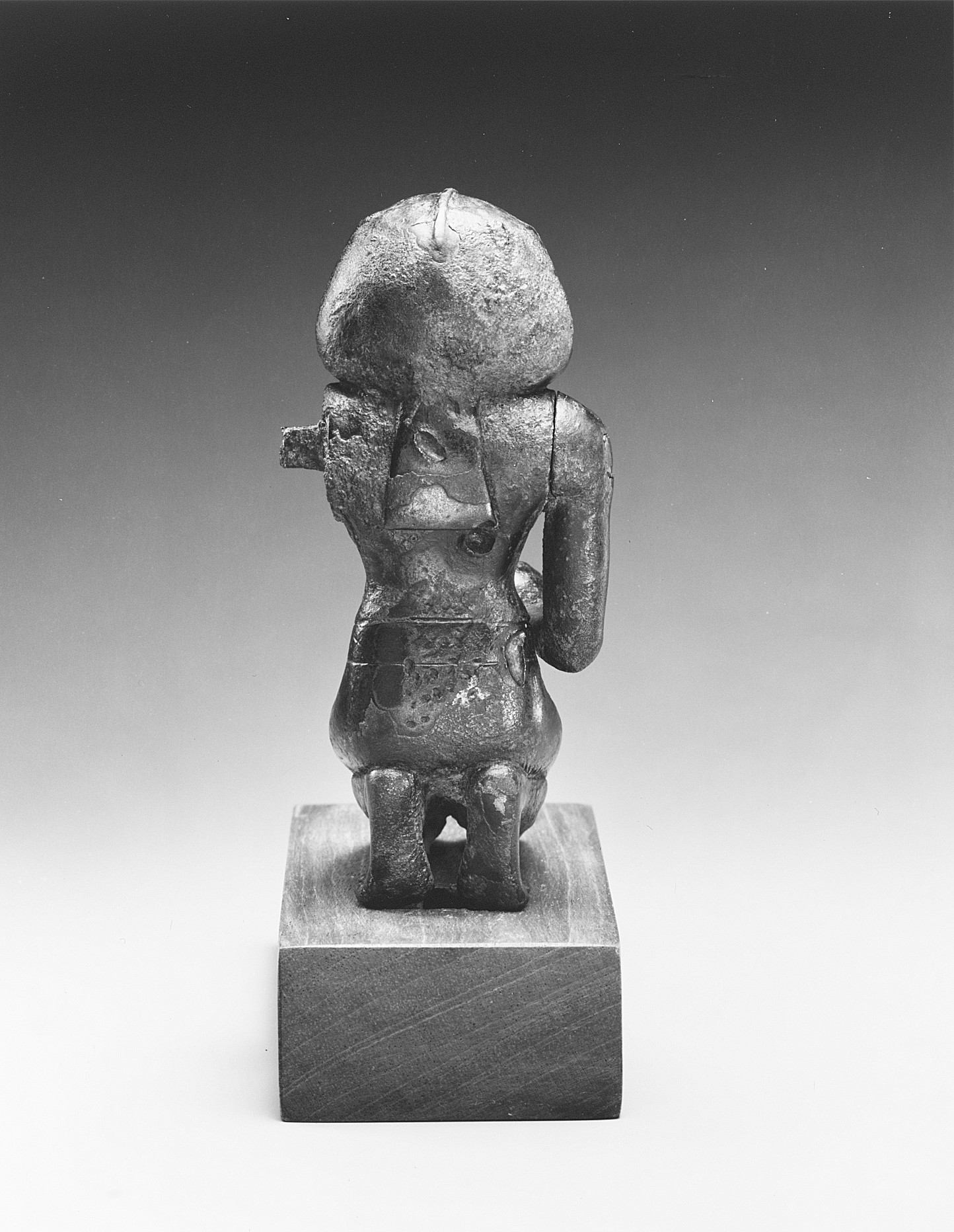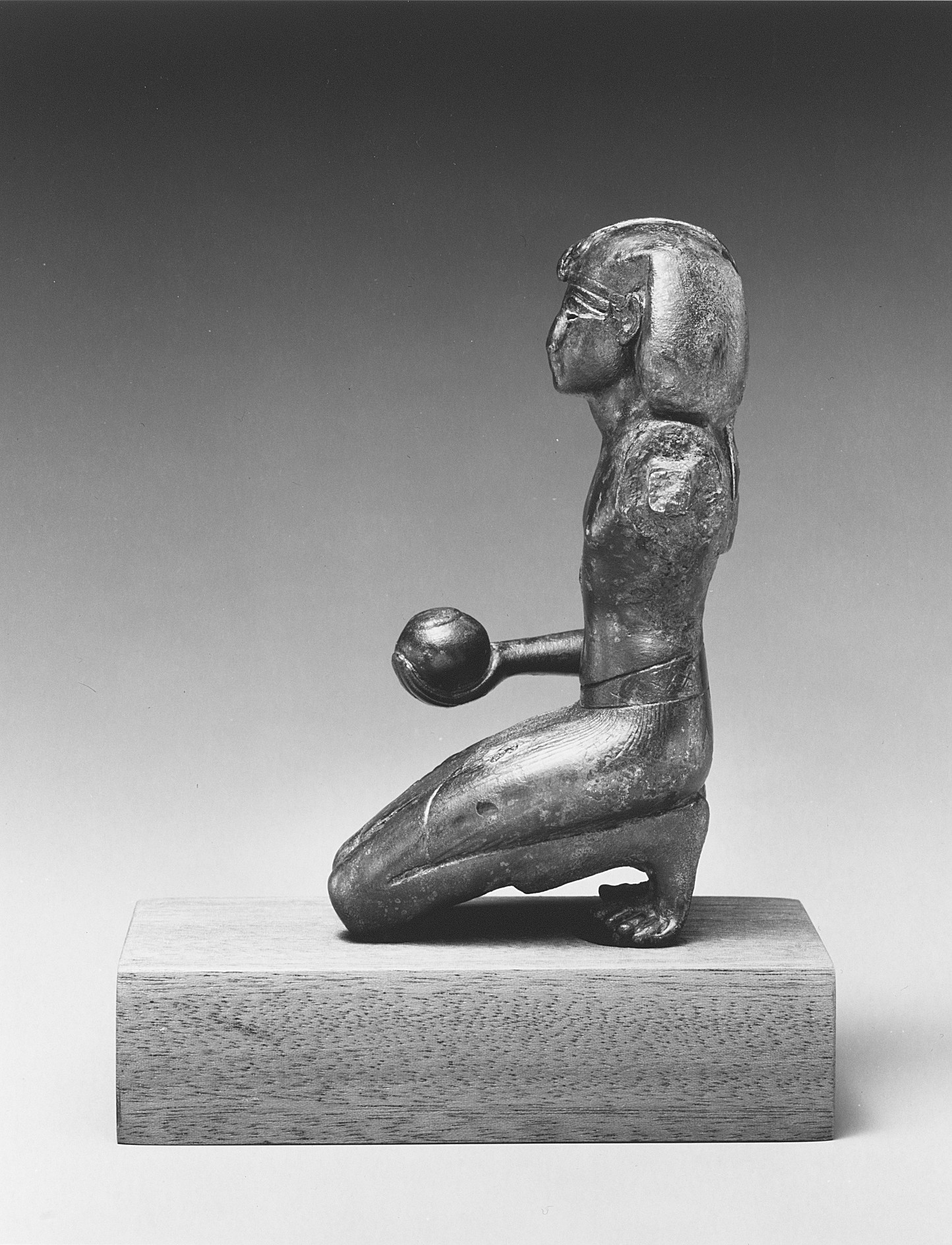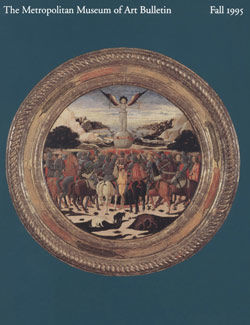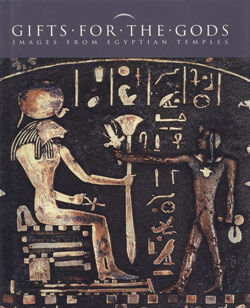Ritual Statuette of Thutmose III
New Kingdom
Beautifully poised, this small bronze king offers wine or milk to a god. The fluid, athletic modeling of his body and details of his costume indicate a date in mid–Dynasty 18. In fact, the statuette represents the great king Tuthmosis III, as is revealed by traces of his prenomen (or throne name), Menkheperre, on the belt buckle.
This figure is the earliest known New Kingdom royal bronze statuette and, with a few Late Middle Kingdom copper and copper-alloy precursors, it initiates the tradition of bronze statuary in Egypt. It is a "black" bronze, darkened to heighten the luster of its precious metal inlays. The left eye rim and the nipples retain their original gold inlay. The body of the statuette was solid cast, with separately cast arms (one is missing) fitted onto dowels.
Kneeling bronze kings dating to the New Kingdom are rare. They are found in greater numbers in the Third Intermediate and Late Periods. Such figurines are frequently represented on the great processional barks of the gods, expressing the respectful yet dignified role of the king—himself a god—in ensuring the continuing worship of the gods.
Due to rights restrictions, this image cannot be enlarged, viewed at full screen, or downloaded.
This artwork is meant to be viewed from right to left. Scroll left to view more.



